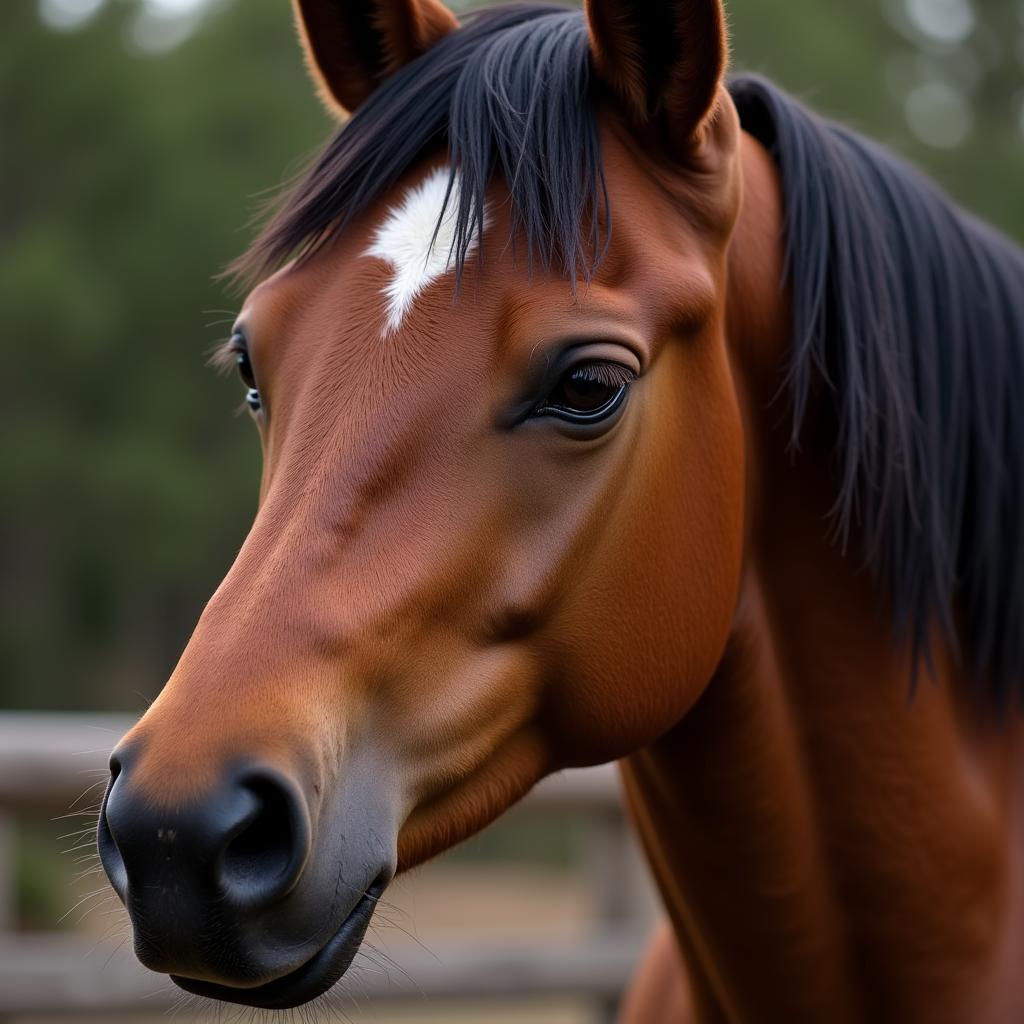The Bay Colt Horse, a young male horse with a rich reddish-brown coat and black points, captures the imagination with its potential for strength and speed. Understanding the characteristics, care, and training of these magnificent creatures is essential for any horse enthusiast.
The Allure of the Bay Colt: Color and Characteristics
Bay is one of the most common coat colors in horses, characterized by a reddish-brown body color, black mane, tail, and lower legs. The shade of bay can vary from a light, almost sandy color to a deep, rich mahogany. This striking color, combined with the inherent energy and potential of a young colt, creates an undeniably captivating presence. Colts, by definition, are young male horses typically under four years old. They are known for their playful nature and boundless energy, requiring careful handling and consistent training.
As colts mature, their physical characteristics become more defined. Their muscular build develops, promising the strength and power that will eventually allow them to perform various tasks, from racing to ranch work. Their elegant proportions and graceful movements add to their overall appeal.  Close-up portrait of a young bay colt
Close-up portrait of a young bay colt
Caring for a Bay Colt
Caring for a bay colt requires a comprehensive approach encompassing nutrition, exercise, and regular health checks. A balanced diet is crucial for healthy growth and development. Young, growing horses require a diet rich in protein, vitamins, and minerals to support bone and muscle development. Famous uk race horses often have specialized diets tailored to their individual needs.
Regular exercise is also essential. Colts need ample opportunity to move and expend their energy. Turnout in a pasture allows them to socialize, explore, and develop their natural athleticism. Controlled exercise, such as lunging or groundwork, helps build muscle and teaches basic obedience.
“Proper nutrition and consistent exercise are the cornerstones of raising a healthy and well-balanced bay colt,” says renowned equine veterinarian, Dr. Amelia Parker. “Early training and socialization are equally important for developing a well-mannered and adaptable horse.”
Training Your Bay Colt: A Foundation for Success
Training a bay colt should begin early, focusing on building trust and establishing clear communication. Groundwork exercises, such as leading, yielding, and backing, teach the colt to respond to cues and develop respect for the handler. These foundational skills are essential for future under-saddle work. Horse terms to know can help you navigate the complexities of equine training.
Consistency and patience are key to successful colt training. Young horses can be easily distracted and may test boundaries. A calm and assertive approach, combined with positive reinforcement, helps build confidence and encourages desired behaviors.
What age is a horse considered a colt?
A male horse is typically considered a colt until it reaches four years of age. After that, it’s classified as a stallion.
Why are bay horses so popular?
Bay horses are popular for their striking color, versatility, and generally even temperament.
Bay Colt Horse: A Symbol of Promise
The bay colt horse represents the boundless potential of youth and the promise of future greatness. With proper care, training, and nurturing, these magnificent animals can develop into strong, athletic partners, fulfilling the dreams of horse enthusiasts everywhere. Exaggerator the horse is a prime example of the potential of a bay colt. Remember, investing in a young horse is investing in a future filled with exciting possibilities.
“A bay colt represents the future of the equine world,” notes experienced horse trainer, Mr. John Davies. “Their energy, athleticism, and trainability make them a joy to work with and a symbol of hope for generations to come.”
Conclusion
The bay colt horse, with its captivating beauty and inherent athleticism, holds a special place in the hearts of horse lovers. Understanding their unique needs and providing the proper care and training will unlock their full potential, paving the way for a rewarding partnership. Remember, a well-cared-for bay colt is an investment in a future filled with endless possibilities.
FAQ
- What is the difference between a colt and a stallion?
- What are the key nutritional needs of a bay colt?
- When should training begin for a bay colt?
- What are the common health concerns for young horses?
- What are the different shades of bay coat color?
- What type of exercise is suitable for a growing colt?
- What are some tips for handling a spirited young horse?
For any further assistance, please contact us at Phone Number: 0772127271, Email: [email protected] or visit our address: QGM2+WX2, Vị Trung, Vị Thuỷ, Hậu Giang, Việt Nam. We have a 24/7 customer service team.